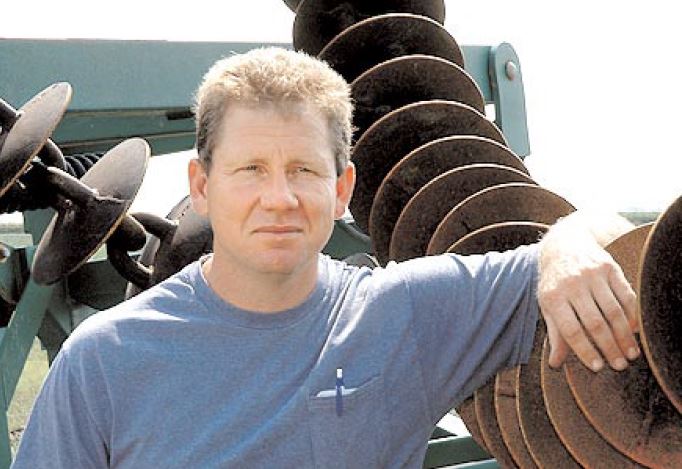Gerald Scheckel takes a handful of soil and lets it sift through his fingers. “Perfect seedbed,” he says. “Perfect.”
The Richmond, Kan., producer is checking his field after one pass by his Kelly Disc Chain Harrow. The 60-ft. hydraulically- folding unit features flexible disc gangs on a mega-stout industrial chain and mounted to a sturdy steel frame. The offset “chains” are drawn across the ground at an angle, filling in ruts, controlling weeds and leaving that perfect seedbed Gerald Scheckel appreciates:
“It works the top inch, inch-and-a-half of the soil,” Scheckel explains. “You drop the seed just below that in firm, moist soil and you have the loose, fluffy material on top so those seedlings can poke through easily.”
The east-central Kansas 50-50 corn and soybean farmer reports more consistent seed placement and better stands as a result of the surface tillage operation. He also appreciates the fact that the Kelley Disc Chain Harrow can get him into planting mode significantly sooner in wet conditions.
“That’s where it really shines,” Scheckel notes.
“Especially in some of the clay soils we have, if you try to plant when it’s a little wet, you’re going to have clay sticking to your row units and your gauge wheels. If you can work that top inch and let the sun and the air hit it— even for an hour—it just plants 100 percent better. You get on the field a lot sooner and you don’t have the clods or slabs to con- tend with.”
With about 7,000 acres of row crops, a custom feedyard, a couple hundred cows and plenty of pasture, Scheckel has plenty to keep him busy. A tool that’s a time-saver as well as a productivity-booster fits the operation like a glove.
“Anything that can save us time and allow us to get into the field quicker gets a lot of respect around here,” he observes. “The Kelly Harrow works really well in our environment and it’s just so much faster—it’s one of the best tools I’ve ever had.”
Scheckel bought the Kelly Disc Chain Harrow to run behind the anhydrous bar because he could build a seedbed without destroying the ammonium polyphosphate bands he was building. He’s discovered, how- ever, that there are more benefits for the implement built by the Australian manufacturer Kelly Engineering.
In the fall, for instance, it can put a roughed-up field back into shape.
“Two passes with this tool will level 12-inch ruts,” Scheckel asserts. “We had some big ruts from running the combine with rice tires on wet ground last fall and a couple of passes with the Chain Harrow and they were gone. You run into the same thing in a double-crop situation. You’re forced to rut up a field because you have to get the wheat off but then you have a mess when you have to plant beans—this machine is a big help.”
Scheckel also sees dramatic weed control benefits.
“It takes out a lot of weeds, even weeds that are rooted down pretty well,” he notes. “We’re planning to run it behind the combine in the fall on corn stalks. In the spring, it just obliterates stalks. In the fall, it’s tougher but if we can get them on that decaying process a little quicker, it’ll help the next spring. It speeds up the deterioration of the stalks, takes out most of the weeds and then we can apply some Canopy or Valor and keep the field clean up to planting time.”
Pointing out that the machine ropes easily over terraces, Scheckel adds that he just plain likes the way it treats his soil.
“The chains get quite a little bit of dirt and residue action going,” he explains. “The residue is the last thing to fall since it’s the lightest. The dirt hits the ground first and you still have the residue on the sur- face where it should be.”
Before getting his Kelly Disc Chain Harrow, Scheckel was using a heavy disk and field cultivator. In addition to preparing a better seedbed, the Kelly is faster and more economical, requiring only about half the fuel compared to the field cultivator.
And with the acres he has to cover, it’s a toss-up for which is more appreciated, saving fuel or saving time. It is that perfect seedbed, however, that Scheckel seems to like the very most.
“You just about have to see it to believe it,” he says.


